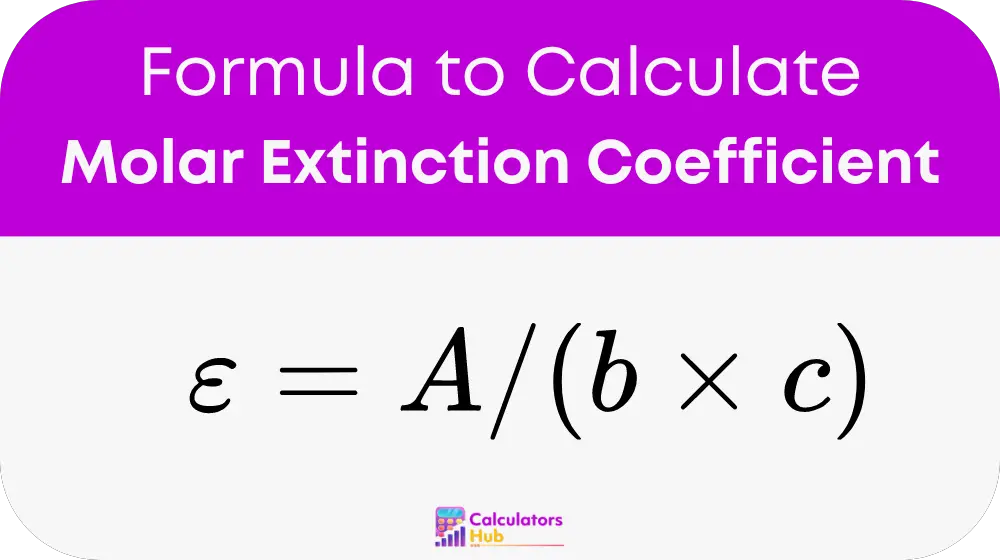The Molar Extinction Coefficient Calculator is an essential tool for scientists and researchers. It calculates the molar extinction coefficient, a measure that is vital for determining the concentration of solutions in fields like biochemistry, molecular biology, and chemistry. This coefficient helps in the accurate quantification of substances using absorbance measurements.
Formula of Molar Extinction Coefficient Calculator
The cornerstone of the molar extinction coefficient calculation is the Beer-Lambert Law, which establishes a linear relationship between absorbance, concentration, and path length of the light through a medium. The formula used is:

Where:
- ε (EPC) represents the molar extinction coefficient in liters per mole-centimeter (L mol^-1 cm^-1).
- A is the absorbance, a unitless measure obtained from a spectrophotometer.
- b is the path length through the cuvette, usually 1 cm.
- c is the concentration of the solution in moles per liter (mol/L).
Useful Conversion Table
To assist in practical applications, here is a table with common values calculated using the molar extinction coefficient:
| Concentration (mol/L) | Path Length (cm) | Molar Extinction Coefficient (L mol^-1 cm^-1) |
|---|---|---|
| 0.1 | 1 | 10 |
| 0.5 | 1 | 50 |
| 1.0 | 1 | 100 |
This table serves as a quick reference to avoid recalculations in routine experiments.
Example of Molar Extinction Coefficient Calculator
Consider a solution with an absorbance of 0.5 measured in a 1 cm cuvette containing a 0.1 M solution of a compound. Using the formula:
ε = 0.5 / (1 * 0.1) = 5 L mol^-1 cm^-1
This value tells us how much light the compound absorbs, helping in its identification and concentration determination.
Most Common FAQs
The molar extinction coefficient allows for the precise determination of concentrations, crucial for quantitative analysis and reproducibility in experiments.
Changes in path length directly affect the extinction coefficient; a longer path length increases the absorbance, altering the coefficient value.
It can be challenging as each component has a different absorption profile. Specialized calculations or experimental setups are often required for mixtures.